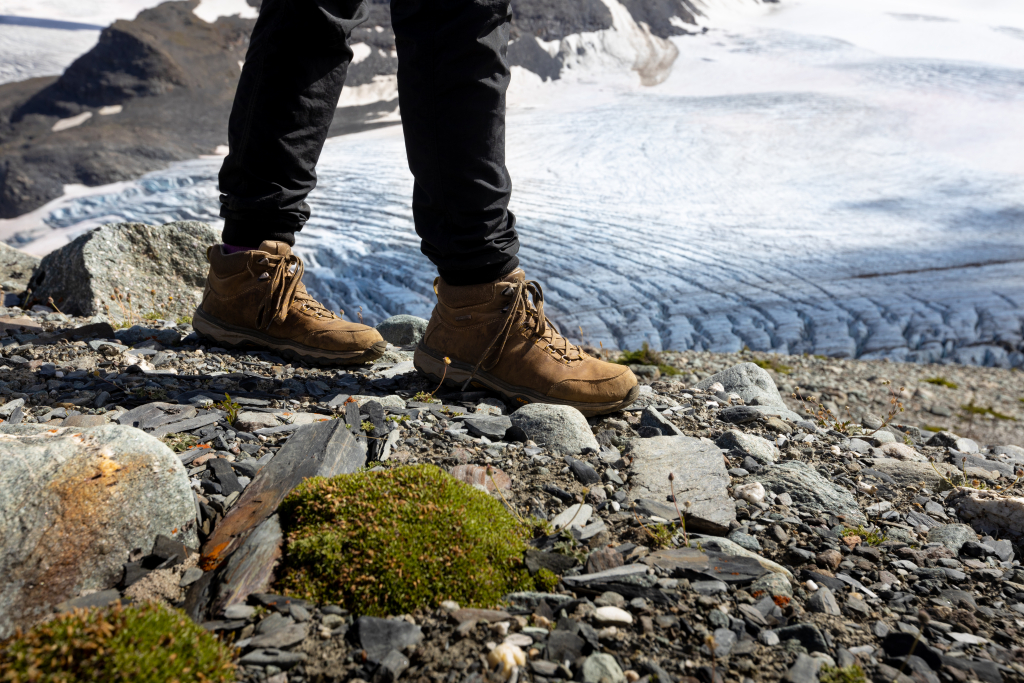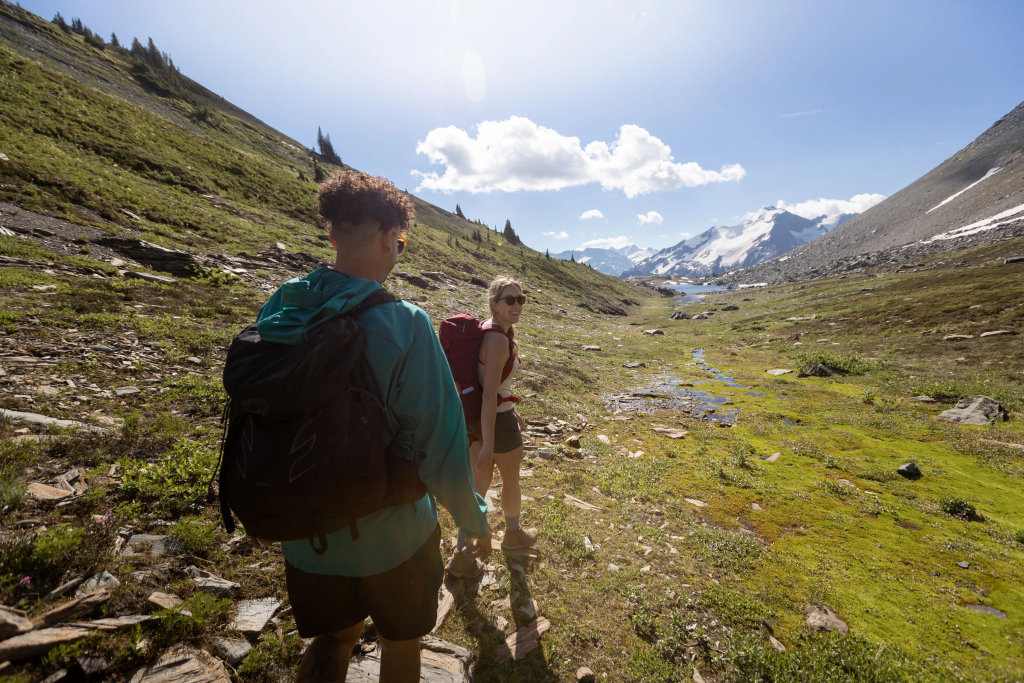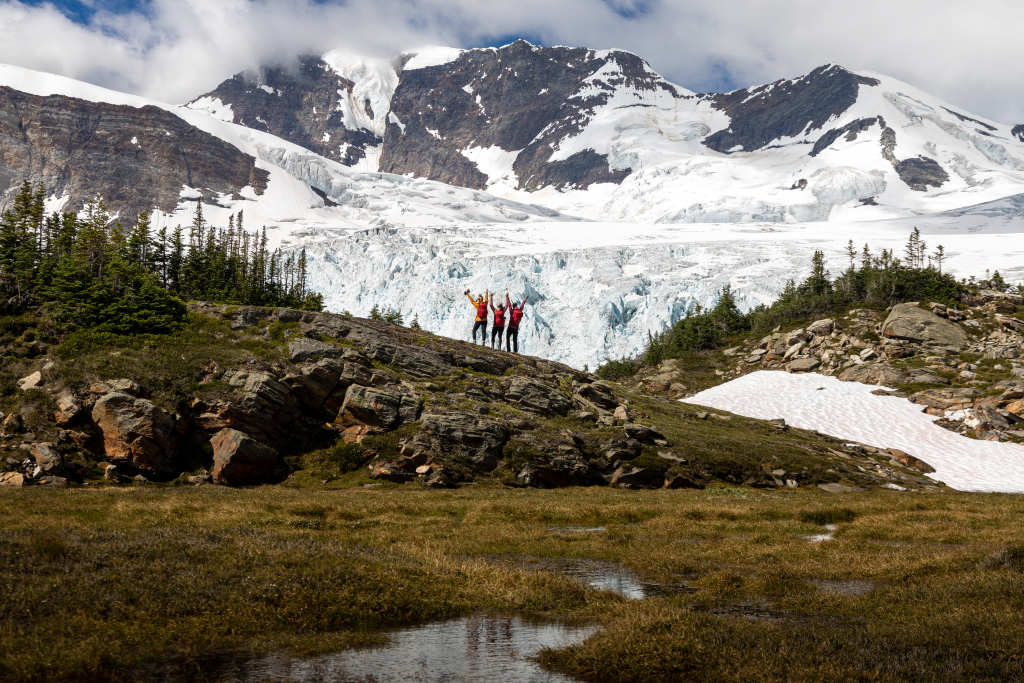Updated Feb 14, 2024 | Words by Kelsey Verboom
If you’re in planning mode and dreaming of your first hike of the year, there are a few things you can do in the lead-up to set yourself up for successful early days back on-trail.
Whether you’re exploring your own backyard or getting ready to join a CMH heli-hiking adventure, read on for three pieces of advice from a professional guide about how to prep prior to lacing up your boots.

Inventory your backpack and inspect your gear
There are two types of hikers: the ones who meticulously wash and store their gear following the final fall hike of the season, and the ones who can’t quite remember if they emptied their pack…or where they put it.
If you fall into camp ‘B’, now’s the time to take stock.
“If you didn’t remember to clean out your pack last season, dump it out and check for surprises,” said Matt Dellow, CMH guide and Area Manager of CMH Bobbie Burns.
You might find a half-eaten PB&J sandwich and a shriveled orange (oops), or you might find a few more serious things that need to be replaced.
“If your pack was a bit damp when you put it away and maybe your first aid kit sat at the bottom of it all winter, your bandages or medication may no longer be usable,” Matt said.
“Especially if you’re hiking on your own without a guide, everyone should carry a first aid kit. It’s good practice to regularly open it up and check the contents. Over time, things can get moldy, expire or deteriorate. It’s better to discover that at home than in the middle of an emergency when you really need them.”
Other items in your pack that you should check the expiry dates and working condition of include bear spray, sunscreen, bug spray, and safety flares.
And if you carry water in a hydration system, clean and rinse out the bladder and hose to get rid of lingering bacteria.
Make it part of your spring-cleaning routine to give a thorough once-over to everything in your pack and replace what you need to. Heck, maybe even toss your pack in the wash and start the season with a reset pack and a fully fresh slate (unless your backpack is a hard-earned trophy of carefully built-up, sweaty layers that you don’t want to erase. We get that, too.)

Focus on footwear
Don’t overlook footwear during your pre-hike gear inspection.
“Your footwear is by far your most important piece of equipment,” Matt said. “I can’t stress the importance of comfortable, properly fitting footwear enough. It can either make, or break, your hike.”
Take the time to give attention to this essential piece of gear.
Inspect the treads on your boots or hiking shoes, give the laces a good yank, and check for any rips or tears in the fabric or leather. If you spot anything failing or conclude that your boots’ days of having good grip are over, think about repairing or replacing them. And if your boots are the kind that need waterproofing, give them a fresh layer of repellant.
If you do need to replace footwear that requires a break-in period—like stiff mountaineering boots—the earlier you replace them, the more time you’ll have to get comfortable wearing them.
“If you’re going out in early season, you might also think about bringing a pair of gaiters with you to prevent any snow and muck you may encounter from entering the top of your boots,” Matt added.
What are gaiters? Think of them as sleeves for your boots that help keep your feet dry and protected. They are made of lightweight waterproof material and are worn on your lower leg. Gaiters fit over the upper opening of your boots and prevent the elements from sliding down your socks. Ewh.

Take it to the trails
Nancy Sinatra said it first: “These boots were made for walkin’”
So? Get walkin’!
One of the best things you can do to get your body ready for hiking season is to work on your cardio and regularly engage in movement. Even better? Choose movements that mimic the different aspects of hiking.
“Jog or go for walks, and keep building those into longer jogs or walks,” Matt said. “It’s way better if you can find somewhere to get off the pavement. That’s a great way to work all those little muscles that will articulate when you’re hiking on uneven ground.”
If going off-road isn’t something you do regularly, you might feel unsteady when you encounter varied terrain out hiking. To practice, find an unpaved trail with some hills and get accustomed to walking uphill and downhill, over roots, rocks and bumps (these outings are also a great way to break in footwear and test new hiking clothes).
If you’re working up to a particular hike, or a bucket list trip like heli-hiking, the approach is simple.
“To get the most out of your hiking experience, hike as much as you can beforehand,” Matt said.
You’ll thank yourself for it when you’re standing on top of the peak you eyeballed all winter.

Your next adventure
If you’re keen to hike but would love more guidance on the trail, join us on a multi-day heli-hiking trip. Stay at a remote, comfort-packed lodge, and fly via helicopter each morning to stunning landscapes to explore and hike with a professional guide.
Questions? Contact us.